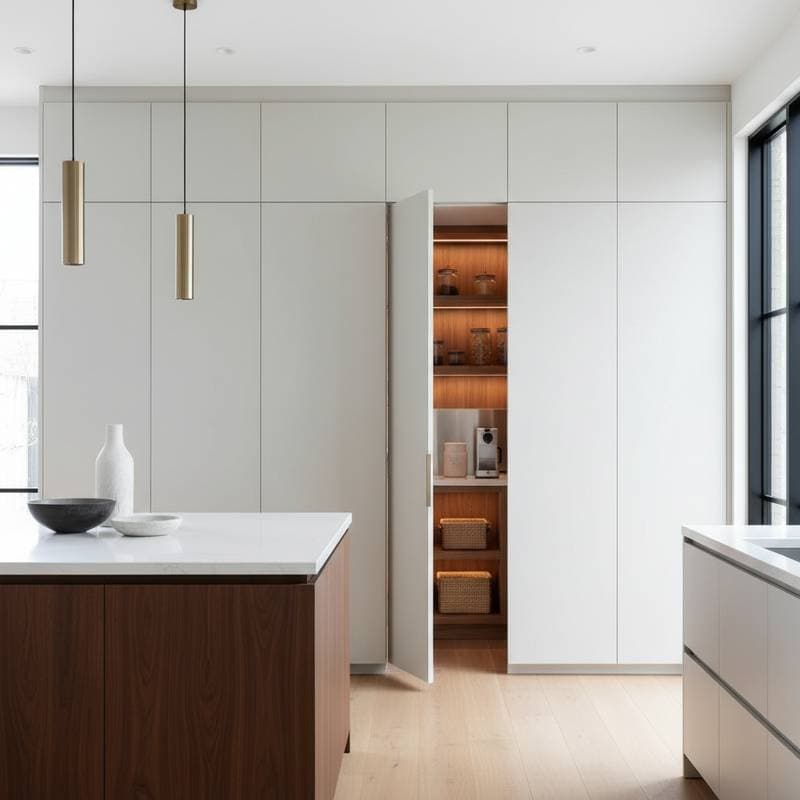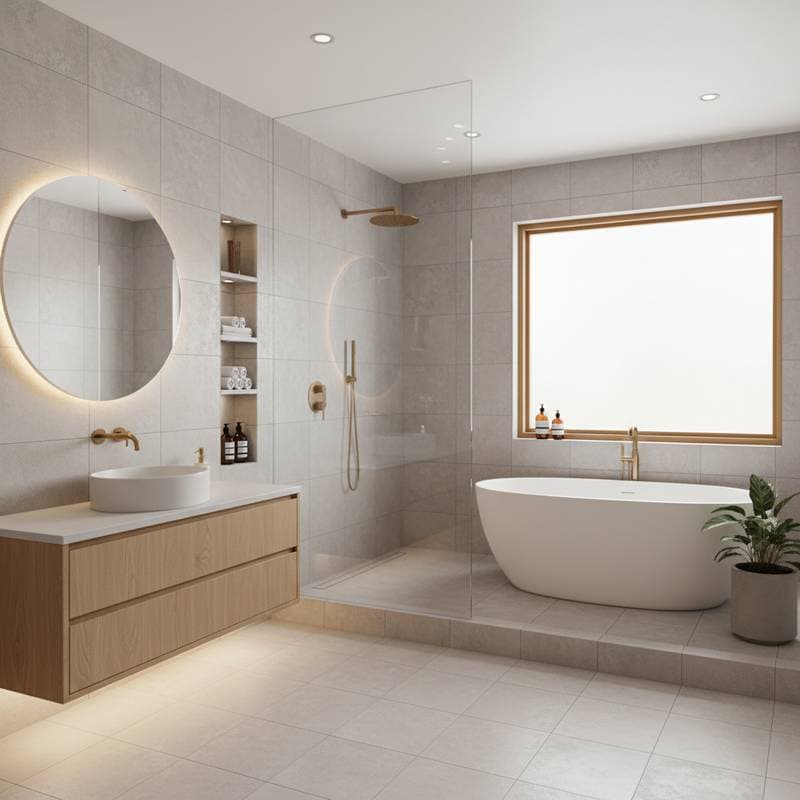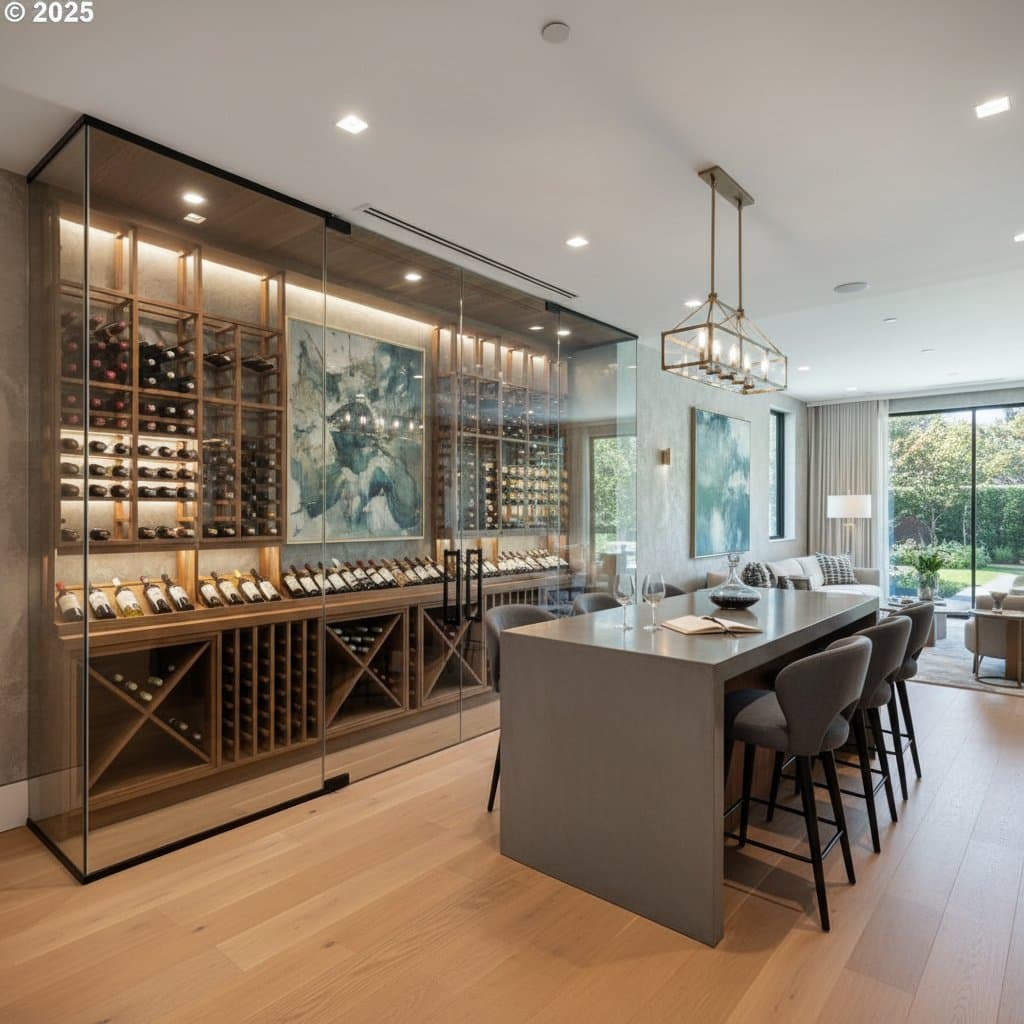Understanding Hidden Pantry Walls
Hidden pantry walls integrate seamlessly into kitchen designs, providing concealed storage without disrupting visual harmony. These features consist of custom-built panels or doors that blend with existing cabinetry or walls, revealing expansive shelving or organizational systems upon activation. Homeowners appreciate their ability to maintain a clutter-free appearance while maximizing space efficiency.
This upgrade appeals to modern buyers who prioritize functionality alongside style. Unlike traditional pantries, hidden versions utilize innovative mechanisms such as sliding panels or pocket doors. Such designs cater to the growing demand for streamlined interiors in contemporary residences.
The Impact on Home Value in 2025
Market analyses project that hidden pantry walls contribute an 11 percent uplift to overall home valuation by 2025. This boost stems from their enhancement of perceived space and organization, which appraisers recognize as premium features. In competitive real estate landscapes, kitchens equipped with these elements stand out, attracting offers that exceed initial expectations.
Factors influencing this value addition include regional trends toward open-concept layouts and sustainable living. Properties with integrated storage solutions command higher prices, as they address common pain points like limited counter space. Real estate experts note that such investments yield returns surpassing many cosmetic updates.
Breaking Down Installation Costs
Budgeting for hidden pantry walls requires consideration of several variables, with total costs typically spanning $3,000 to $12,000. Basic installations in standard-sized kitchens start at the lower end, incorporating simple sliding mechanisms and basic materials. More elaborate setups, featuring automated doors or custom lighting, approach the upper limit.
Material choices significantly affect expenses. Options like solid wood panels or high-grade laminate influence both durability and price. Labor fees vary by location and complexity, often comprising 40 to 60 percent of the overall budget. Homeowners benefit from obtaining multiple quotes to identify cost-effective providers.
- Assess kitchen dimensions to estimate material needs.
- Select hardware types, such as soft-close hinges or electronic locks.
- Factor in potential electrical work for integrated features.
Design Considerations for Optimal Results
Effective design begins with aligning the pantry wall to the kitchen's architectural style. Measure available wall space precisely to ensure the feature fits without encroaching on traffic flow. Incorporate adjustable shelving to accommodate diverse items, from bulk groceries to small appliances.
Color coordination plays a crucial role in achieving invisibility. Match panel finishes to surrounding cabinetry using neutral tones or subtle textures. Ventilation systems prevent moisture buildup, preserving stored goods and extending the unit's lifespan.
Consider accessibility features for universal appeal. Pull-out drawers and tiered racks facilitate easy retrieval, particularly for lower shelves. Lighting options, such as LED strips, illuminate contents upon opening, enhancing usability during daily routines.
Step-by-Step Installation Guide
Professional installation ensures structural integrity and aesthetic precision. Begin by consulting a contractor to evaluate the site and draft blueprints. This phase identifies any necessary reinforcements to support the added weight of storage components.
Demolition, if required, involves removing sections of existing walls or cabinets with minimal disruption. Frame the new structure using sturdy lumber or metal supports. Install the concealment mechanism next, testing its operation before finalizing panel attachments.
Finishing touches include sealing joints and applying paint or veneer. Allow adequate drying time before loading the pantry. The entire process spans one to three days, depending on scope, with post-installation inspections verifying smooth functionality.
Long-Term Maintenance and Durability
Hidden pantry walls demand routine care to sustain their performance. Clean surfaces with mild solutions to avoid damaging finishes. Lubricate moving parts annually to prevent sticking or noise.
Select moisture-resistant materials to combat humidity in kitchen environments. Regular inspections detect wear on hinges or tracks early. With proper upkeep, these installations endure for decades, justifying the initial investment.
Enhancing Resale Appeal Through Strategic Upgrades
Position hidden pantry walls as a key selling point during property showings. Highlight their space-saving benefits in listing descriptions to draw interest from organizational-minded buyers. Staging the kitchen with the feature open demonstrates its practicality.
Combine this upgrade with complementary enhancements, such as quartz countertops or energy-efficient appliances. Such synergies amplify the 11 percent value increase, creating a cohesive, high-end kitchen narrative. Buyers perceive these details as indicators of thoughtful home maintenance.
Realize Greater Returns on Your Kitchen Investment
Implementing hidden pantry walls transforms ordinary kitchens into efficient, valuable assets. This upgrade not only organizes daily life but also secures financial advantages in future sales. Act now to capitalize on 2025 market trends and elevate your home's potential.












